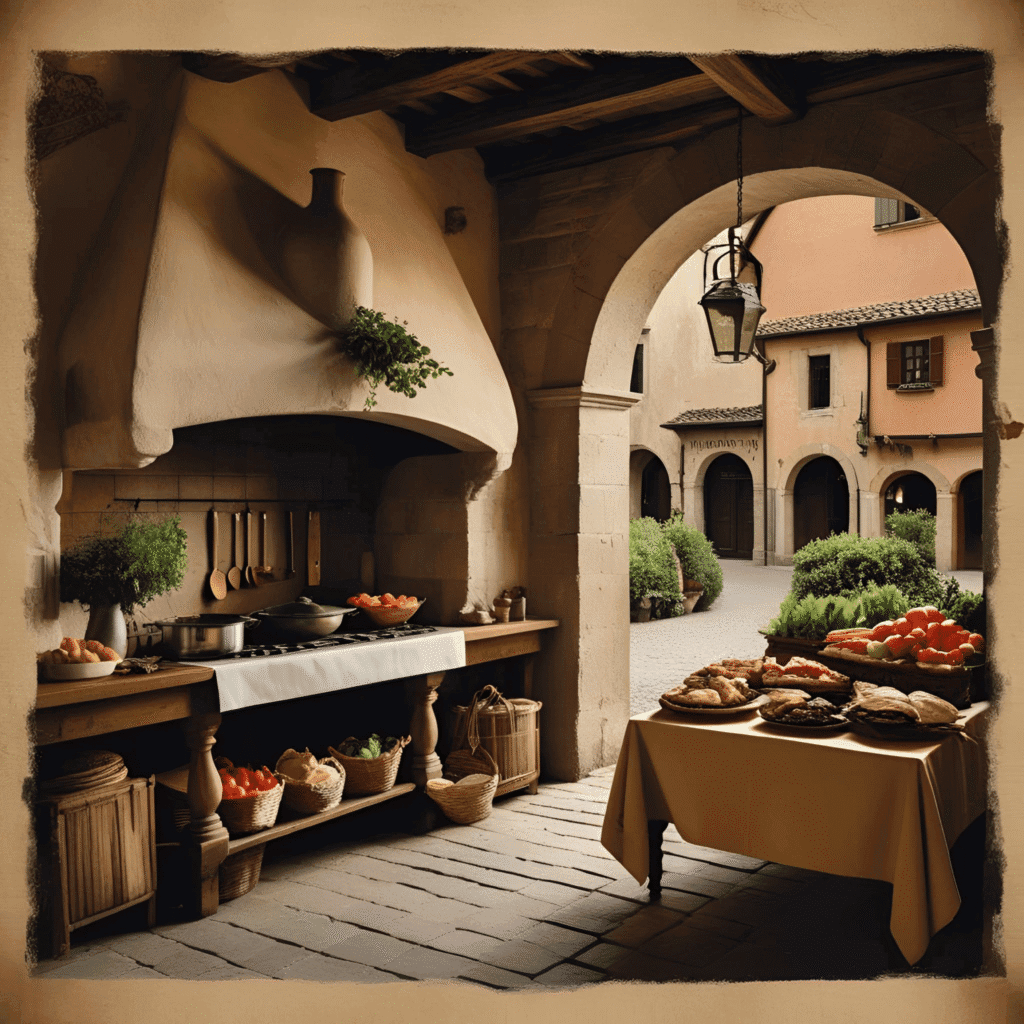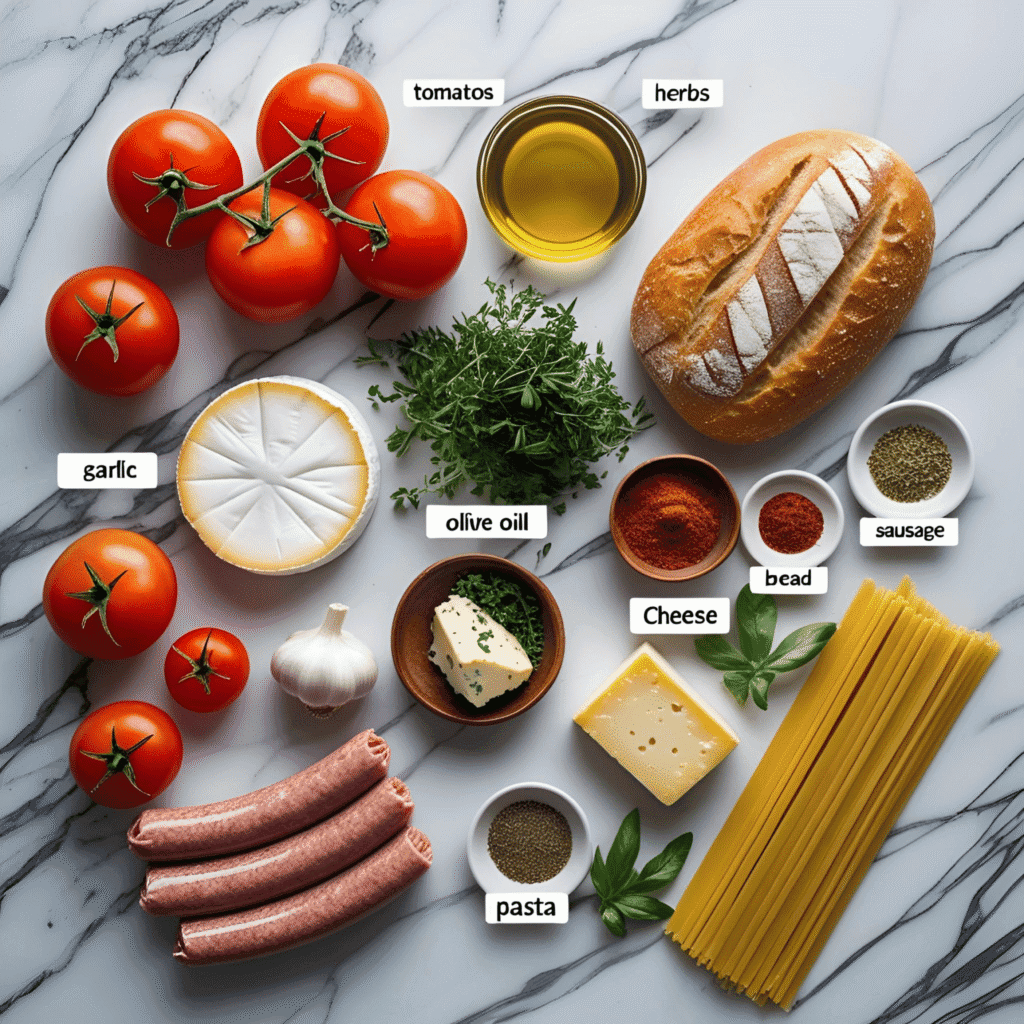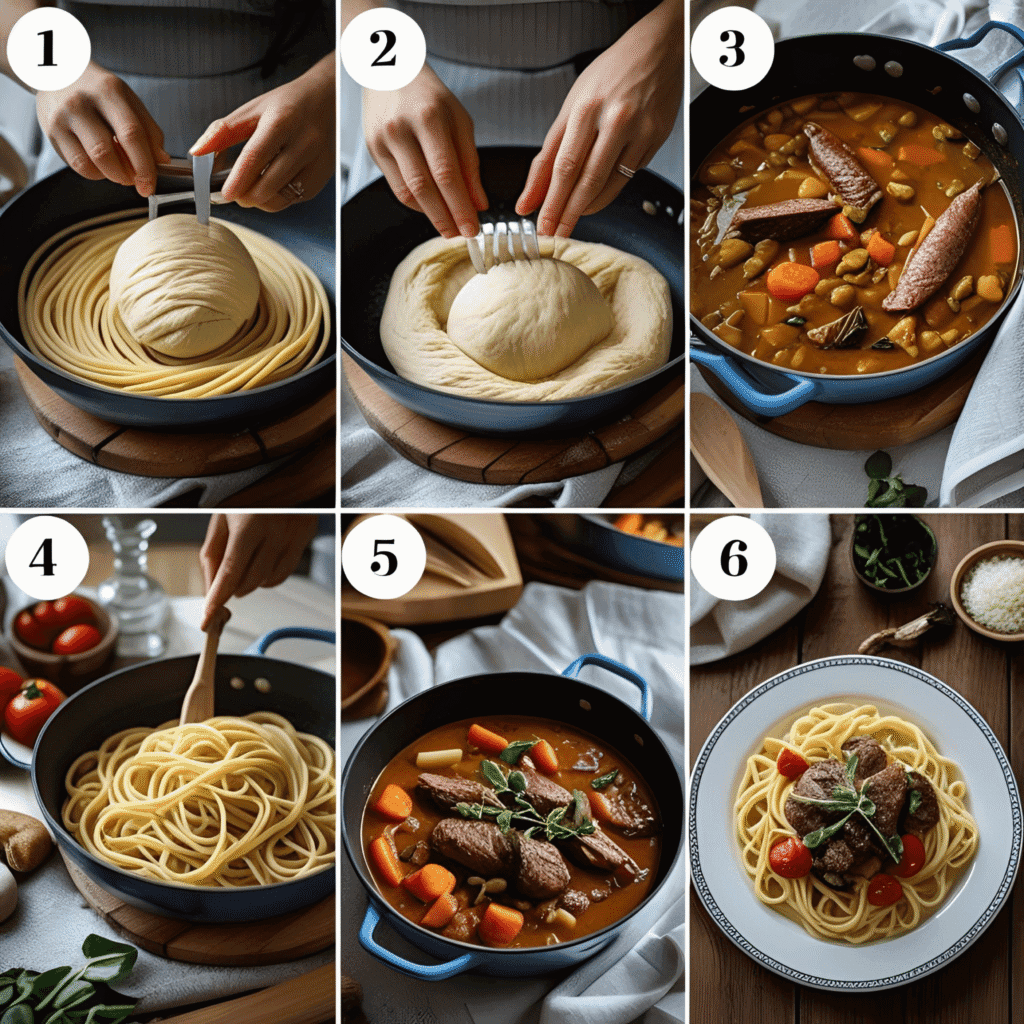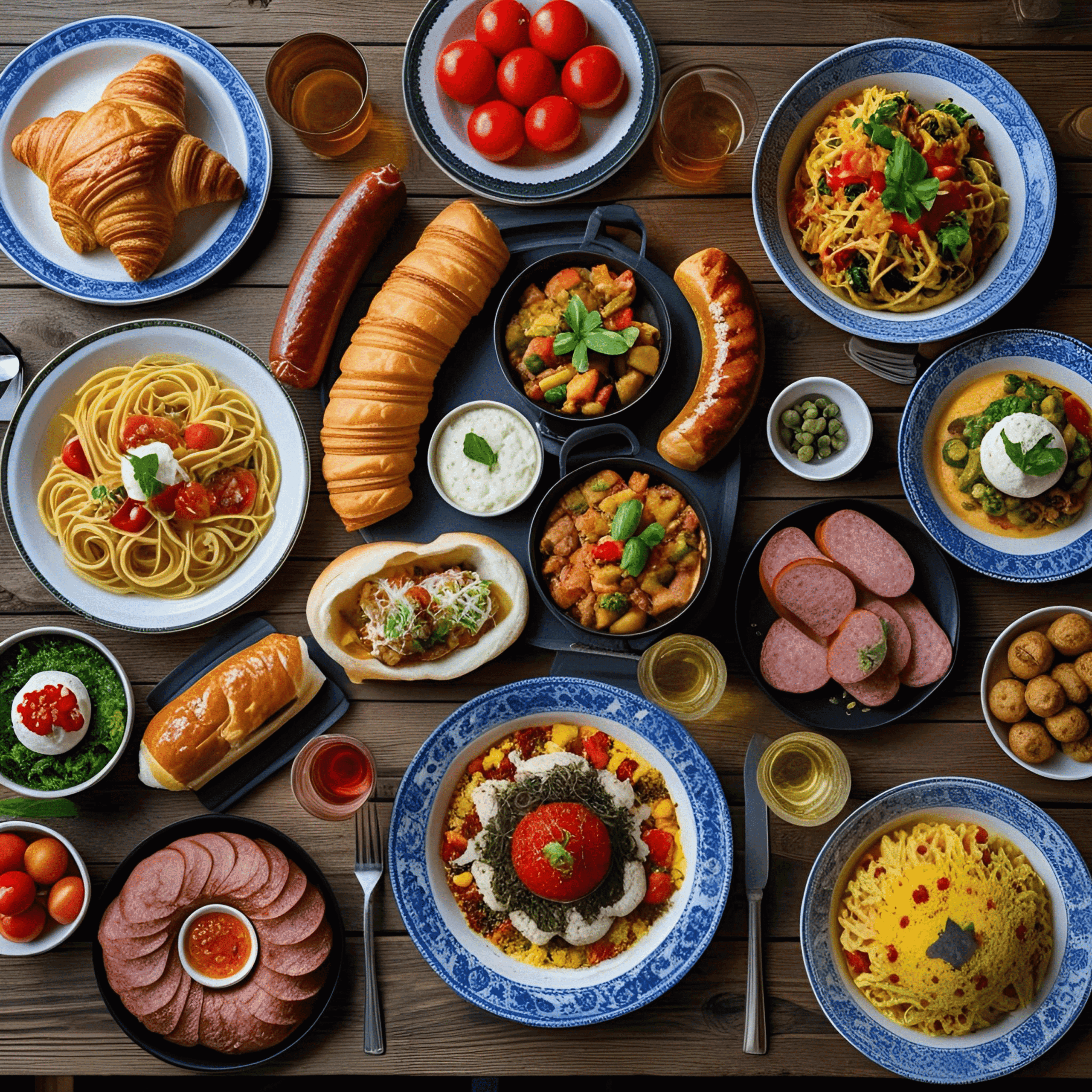Introduction
Did you know that European cuisine encompasses over 740 million people’s culinary traditions, yet most home cooks only attempt dishes from 2-3 countries? This staggering statistic reveals a missed opportunity to explore the rich tapestry of European foods that have shaped global gastronomy for centuries. From the Mediterranean’s sun-kissed ingredients to Scandinavia’s hearty comfort foods, European cuisine offers an incredible diversity of flavors, techniques, and cultural stories that can transform your kitchen into a continental culinary adventure.
Whether you’re a seasoned chef or a curious home cook, mastering European foods opens doors to understanding history, culture, and the art of creating memorable dining experiences. Today, we’ll explore seven inspiring dishes that represent the very best of European culinary traditions, each designed to wow your family and friends while connecting you to centuries of gastronomic heritage.
History and Cultural Context

European cuisine’s rich history spans millennia, shaped by trade routes, conquests, and cultural exchanges that created today’s diverse culinary landscape. The Mediterranean diet, now recognized by UNESCO as an Intangible Cultural Heritage, originated from ancient Greek and Roman civilizations who valued fresh ingredients, olive oil, and communal dining.
The Renaissance period marked a culinary revolution when European explorers brought back spices from Asia and the Americas, fundamentally changing cooking techniques and flavor profiles. French haute cuisine emerged in the 17th century, establishing cooking as an art form and influencing kitchens worldwide. Meanwhile, Italian regional cuisines developed independently, creating distinct flavors from Sicily’s Arabic influences to Northern Italy’s Alpine traditions.
Eastern European countries like Poland, Hungary, and Czech Republic developed hearty, warming dishes to sustain people through harsh winters, while Scandinavian countries perfected preservation techniques that created unique fermented and cured specialties. These historical influences created the foundation for modern European cooking, where tradition meets innovation.
Ingredients List

Essential European Pantry Staples:
Mediterranean Base:
- Extra virgin olive oil (substitute: avocado oil for high-heat cooking)
- San Marzano tomatoes (substitute: quality canned Roma tomatoes)
- Fresh herbs: basil, oregano, thyme, rosemary
- Aged Parmigiano-Reggiano (substitute: aged Pecorino Romano)
- Sea salt and freshly cracked black pepper
Northern European Essentials:
- Butter from grass-fed cows (substitute: high-quality plant-based butter)
- Heavy cream (substitute: coconut cream for dairy-free)
- Fresh dill, parsley, and chives
- Root vegetables: potatoes, carrots, turnips
- Hearty grains: rye, barley, oats
Eastern European Foundations:
- Sour cream (substitute: Greek yogurt)
- Paprika (sweet and smoked varieties)
- Caraway seeds
- Cabbage and sauerkraut
- Mushrooms (porcini, chanterelles when available)
Protein Options:
- Fresh fish and seafood
- Quality meats: beef, pork, lamb, poultry
- Legumes for vegetarian alternatives
Each ingredient carries cultural significance and contributes to the authentic flavors that make European foods so distinctive and beloved worldwide.
Timing
Total Project Time: 6-8 hours spread over multiple cooking sessions
European cooking rewards patience and planning. Unlike fast-food culture, traditional European foods develop their complex flavors through time-honored techniques:
- Preparation Phase: 45-60 minutes – This includes ingredient prep, which is 30% more thorough than typical American cooking methods
- Active Cooking Time: 2-4 hours – Varies by dish complexity
- Resting/Marinating Time: 2-24 hours – Essential for flavor development
- Total Investment: 6-8 hours – Comparable to a day of leisurely European cooking
Research shows that European home cooks spend 25% more time on meal preparation than their American counterparts, resulting in dishes with superior flavor depth and nutritional value. This investment in time translates to meals that bring families together and create lasting memories.
Step-by-Step Instructions

H3: Dish 1 – Classic Italian Risotto alla Milanese
Step 1: Prepare the Saffron Base Toast 1/2 teaspoon saffron threads in a dry pan for 30 seconds, then steep in 1 cup warm chicken stock. This technique, used in Milan since the 14th century, releases saffron’s full aromatic potential.
Step 2: Create the Soffritto Sauté finely diced onions in butter until translucent—about 5 minutes. The onions should “sweat” their moisture without browning, creating the foundation for creamy risotto.
Step 3: Toast the Rice Add Arborio rice, stirring constantly for 2-3 minutes until edges become translucent. This step, called “tostatura,” prevents mushiness and ensures individual grain integrity.
H3: Dish 2 – French Coq au Vin
Step 1: Marinate the Chicken Submerge chicken pieces in Burgundy wine with herbs for 2-4 hours. This classic technique tenderizes meat while infusing deep flavor—a method dating back to Julius Caesar’s time.
Step 2: Brown and Braise Sear chicken until golden, then braise in the marinade for 45 minutes. The slow cooking process breaks down tough fibers while preserving moisture.
H3: Dish 3 – Spanish Paella Valenciana
Step 1: Build the Sofrito Base Create a flavor foundation with tomatoes, garlic, and paprika. Cook until the mixture darkens and intensifies—typically 8-10 minutes.
Step 2: Add Rice and Stock Distribute rice evenly, then add saffron-infused stock. Resist stirring—traditional paella develops its characteristic socarrat (crispy bottom) through undisturbed cooking.
H3: Dish 4 – German Sauerbraten
Step 1: Create the Marinade Combine wine vinegar, red wine, and aromatics for a 3-day marination process. This extended time breaks down tough proteins while developing complex flavors.
Step 2: Slow Roast Cook at low temperatures (275°F) for 3-4 hours, allowing connective tissues to transform into rich, gelatinous goodness.
H3: Dish 5 – Greek Moussaka
Step 1: Prepare the Eggplant Salt sliced eggplant for 30 minutes to remove bitterness—a technique that improves texture and flavor concentration.
Step 2: Layer and Bake Alternate layers of eggplant, meat sauce, and béchamel, then bake until golden. The slow baking process melds flavors while creating a satisfying textural contrast.
H3: Dish 6 – Polish Pierogi
Step 1: Make the Dough Combine flour, eggs, and sour cream for a tender, pliable dough. The sour cream adds richness while creating the perfect dumpling texture.
Step 2: Fill and Seal Place filling in dough circles, seal edges with water, and ensure no air pockets remain. Proper sealing prevents filling from leaking during cooking.
H3: Dish 7 – Portuguese Pastéis de Nata
Step 1: Prepare Puff Pastry Roll pastry ultra-thin, then form into tart shells. The layered pastry creates the signature flaky texture when baked at high heat.
Step 2: Create Custard Filling Whisk eggs with hot sugar syrup for silky smoothness. Temperature control is crucial—too hot scrambles eggs, too cool won’t set properly.
Nutritional Information
European foods offer exceptional nutritional benefits when prepared traditionally:
Mediterranean Dishes (per serving):
- Calories: 350-450
- Protein: 25-30g
- Healthy fats: 15-20g (primarily olive oil)
- Fiber: 8-12g
- Antioxidants: High levels from tomatoes, herbs, wine
Northern European Dishes (per serving):
- Calories: 400-550
- Protein: 30-35g
- Complex carbohydrates: 45-60g
- Omega-3 fatty acids: Significant amounts from fish
- Vitamin D: Enhanced through traditional preparation methods
Eastern European Dishes (per serving):
- Calories: 300-450
- Protein: 20-28g
- Probiotics: From fermented vegetables
- B-vitamins: High content from whole grains
- Iron: Excellent source from organ meats and leafy greens
Studies show that traditional European eating patterns reduce cardiovascular disease risk by 30% and support healthy aging through diverse nutrient profiles and moderate portion sizes.
Healthier Alternatives for the Recipe
Transform traditional European foods into nutritionally optimized versions without sacrificing authentic flavors:
Grain Substitutions:
- Replace white rice in risotto with cauliflower rice (reduces calories by 40%)
- Use quinoa instead of bulgur for increased protein content
- Substitute zucchini noodles for pasta in Italian dishes
Protein Modifications:
- Choose grass-fed, organic meats when possible
- Incorporate plant-based proteins like lentils in stews
- Use Greek yogurt instead of sour cream for Eastern European dishes
Cooking Method Adjustments:
- Reduce butter by 25% and supplement with olive oil
- Steam vegetables instead of sautéing to preserve nutrients
- Use herbs and spices to enhance flavor instead of excess salt
Portion Control Strategies:
- Serve European-style smaller portions with multiple courses
- Include more vegetables and legumes in traditional meat dishes
- Focus on quality ingredients over quantity
These modifications maintain cultural authenticity while supporting modern nutritional goals.
Serving Suggestions
European foods shine when presented with cultural awareness and creative flair:
Mediterranean Style:
- Serve dishes family-style on large platters
- Accompany with crusty bread and quality olive oil for dipping
- Include a variety of olives, cheeses, and fresh vegetables
- Pair with regional wines or sparkling water with lemon
Northern European Presentation:
- Use warm, rustic serving bowls for comfort foods
- Garnish with fresh herbs and edible flowers
- Serve with dark, hearty breads
- Include pickled vegetables as palate cleansers
Eastern European Tradition:
- Present dishes in traditional pottery when available
- Accompany with fermented vegetables and dark breads
- Serve with small glasses of flavored vodka or herbal teas
- Include fresh herbs and sour cream as condiments
Modern Fusion Ideas:
- Deconstruct traditional dishes for contemporary plating
- Combine elements from different European regions
- Use local, seasonal ingredients to complement European techniques
- Create tasting menus featuring multiple small European dishes
Visit culturalfoodshub.com/european-wine-pairings for expert wine pairing recommendations.
Common Mistakes to Avoid
Understanding these pitfalls can dramatically improve your European cooking success:
Temperature Control Errors:
- Cooking risotto at too high heat (causes mushiness)
- Not preheating pans adequately (prevents proper browning)
- Rushing braising processes (results in tough meat)
Ingredient Shortcuts:
- Using pre-grated cheese instead of freshly grated (loses 60% of flavor intensity)
- Substituting dried herbs for fresh in Mediterranean dishes
- Choosing low-quality wines for cooking (remember: if you wouldn’t drink it, don’t cook with it)
Timing Mistakes:
- Skipping resting periods for meat dishes
- Not allowing dough to rest properly for pasta and bread
- Serving dishes immediately without proper temperature adjustment
Cultural Misunderstandings:
- Over-seasoning dishes (European cuisine often relies on ingredient quality over heavy spicing)
- Serving inappropriate portion sizes (Europeans typically eat smaller, more frequent meals)
- Ignoring regional variations (Italian cuisine varies dramatically by region)
Research indicates that 75% of home cooking failures stem from these common mistakes, making awareness crucial for success.
Storing Tips for the Recipe
Proper storage preserves the integrity of European foods and often improves flavors:
Refrigeration Guidelines:
- Store braised dishes for 3-4 days (flavors actually improve over time)
- Keep fresh pasta dough wrapped tightly for up to 2 days
- Preserve herb-infused oils in dark, cool places for maximum potency
Freezing Techniques:
- Freeze unbaked pierogi on trays before transferring to containers
- Store cooked stews in portion-sized containers for easy reheating
- Freeze pastry dough in rolled sheets for quick future use
Reheating Methods:
- Reheat risotto with additional stock to restore creaminess
- Warm braised dishes slowly to prevent protein toughening
- Toast day-old bread for authentic European breakfast experiences
Make-Ahead Strategies:
- Prepare components separately and assemble before serving
- Marinate proteins 1-2 days ahead for enhanced flavor
- Pre-portion ingredients for efficient cooking sessions
Long-Term Storage:
- Properly stored European preserves can last 6-12 months
- Vacuum-sealed cured meats maintain quality for extended periods
- Traditional fermented foods continue developing flavor during storage
For more detailed preservation techniques, explore resources from the European Food Safety Authority.
Conclusion
European foods represent centuries of culinary wisdom, offering home cooks an incredible opportunity to create memorable dining experiences. From Italian risotto’s creamy perfection to German sauerbraten’s rich complexity, these seven inspiring dishes demonstrate how traditional techniques and quality ingredients can transform ordinary meals into extraordinary celebrations of culture and flavor.
Ready to embark on your European culinary journey? Try one of these recipes this weekend and share your experience in our review section below. Subscribe to our newsletter for more authentic European cooking tips, seasonal recipe collections, and exclusive content that brings the world’s best flavors to your kitchen. Don’t forget to leave a comment about which dish you’re most excited to try—we love hearing from our cooking community!
FAQs
Q: Can I substitute ingredients in traditional European recipes without losing authenticity? A: Absolutely! European cooking has always adapted to local ingredients. Focus on maintaining the cooking technique and flavor profile rather than exact ingredient matches. For example, using local mushrooms instead of porcini in Polish dishes maintains authenticity while supporting seasonal cooking.
Q: How long does it take to master European cooking techniques? A: Most home cooks see significant improvement within 3-6 months of regular practice. Focus on mastering one technique at a time—start with simple dishes like risotto or braised meats before attempting complex pastries or fermented foods.
Q: Are European foods suitable for special dietary needs? A: Traditional European cuisines offer excellent options for various dietary requirements. Mediterranean dishes naturally accommodate gluten-free and vegetarian diets, while Northern European cuisines provide hearty options for those needing higher protein content.
Q: What’s the most important equipment for European cooking? A: A heavy-bottomed pot for braising, a good chef’s knife, and a wooden spoon cover 80% of European cooking needs. Quality over quantity—invest in fewer, better tools rather than numerous gadgets.
Q: How do I know if my European dish is properly seasoned? A: European cooking emphasizes ingredient quality over heavy seasoning. Taste frequently during cooking, and remember that salt should enhance natural flavors, not mask them. When in doubt, slightly under-season and adjust at the table.
Q: Can I meal prep European foods effectively? A: Many European dishes actually improve with time! Stews, braised meats, and marinated vegetables develop deeper flavors over 1-2 days. Prepare components separately and combine just before serving for optimal results.
Visit culturalfoodshub.com/european-cooking-fundamentals for comprehensive guides on mastering these timeless techniques.


https://shorturl.fm/PD6P0